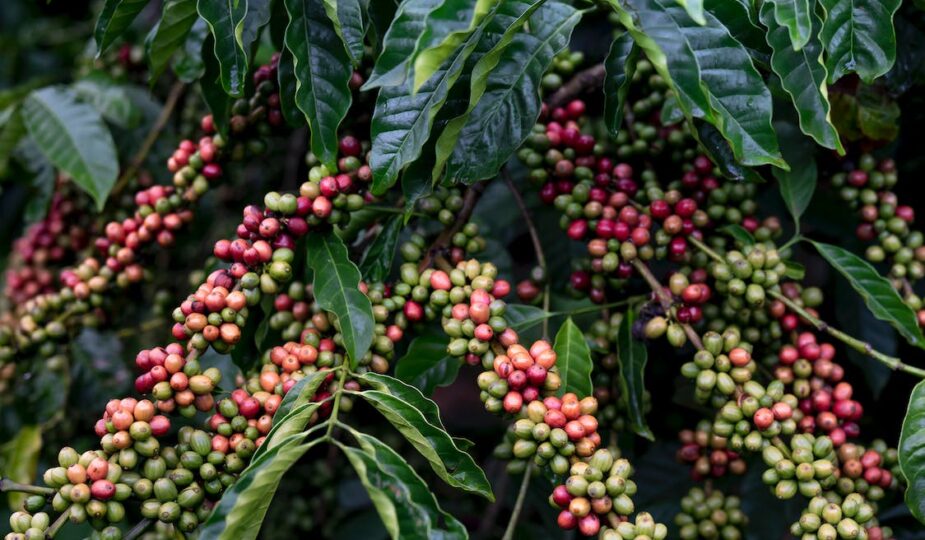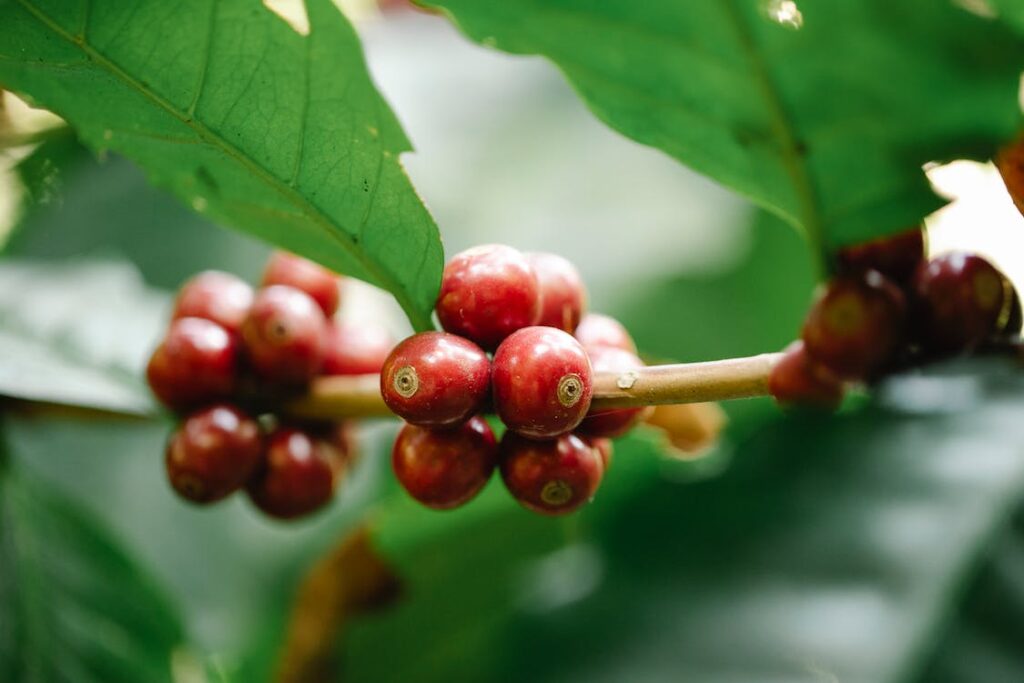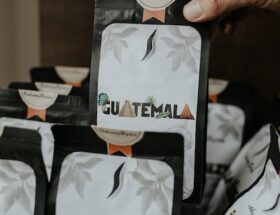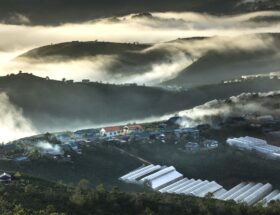
Coffea Arabica: The Secrets of Your Favorite Coffee’s Origin
Famously known for its top-notch beans, Coffea Arabica is a name synonymous with quality in the coffee world. Embark on an exciting journey from the plant’s humble roots in Ethiopia, across the stretches of the Arabian Peninsula, and into your favorite coffee cup. We’ll unravel the secrets of Arabica’s distinctive taste profile, discuss its painstaking cultivation process, and explore how it’s reshaping the global coffee landscape. From farm to roast to magical brew – let us demystify the fascinating story behind Coffea Arabica, one cup at a time. So, whether you’re an Arabica aficionado or a curious coffee lover, we invite you to savor this in-depth appreciation of your favorite morning companion – the Arabica Coffee Plant.
Table of Contents
- The Coffea Arabica Plant
- The Art of Cultivating Coffea Arabica
- The Perfect Harvest: Timing and Method
- Difference from Other Varieties
- Making the Brew: From Bean to Cup
- Health Benefits and Risks
- The Fine Print: Potential Risks and Considerations
- Home Growing Tips: Choosing the Right Location
- Environmental and Sustainability Issues
- Frequently Asked Questions
- What is Coffea Arabica?
- Where does the Arabica coffee tree originate from?
- How is Arabica coffee cultivated?
- What sets Arabica coffee beans apart from other varieties?
- How are Arabica coffee beans processed?
- What is the significance of Arabica coffee in the global coffee industry?
- Are there different varieties of Arabica coffee beans?
- How can I enjoy the best cup of Arabica coffee?
- Is Arabica coffee more expensive than other types of coffee?
- Uncover the Secrets of Arabica Coffee
The Coffea Arabica Plant
Famously known as the Coffee Arabica plant, Coffea Arabica is the species responsible for producing the high-quality coffee beans that we all love. This particular species of the Coffea genus is native to the lush highlands of Ethiopia, where it was first discovered and cultivated centuries ago.
The Arabica coffee tree is a small evergreen shrub that typically reaches a height of 2 to 2.5 meters. Its elongated leaves, which feature prominent veins and a glossy dark green color, provide an attractive aesthetic to coffee plantations around the world. The plant also produces delicate white flowers with a jasmine-like fragrance, adding to its allure.
When it comes to growth conditions, Coffea Arabica thrives in subtropical climates with temperatures ranging between 15 to 24 degrees Celsius (59 to 75 degrees Fahrenheit). It prefers altitudes between 600 to 2000 meters (1968 to 6562 feet) above sea level and requires well-drained soil rich in organic matter.
Cultivating Arabica coffee is no easy feat. This plant demands meticulous care and attention. The process begins with the germination of its seeds, which are usually first nurtured in nurseries under precise conditions until they sprout. Once ready for transplantation, the young Arabica plants are carefully placed into the soil to continue their growth journey.
The Arabica coffee bean’s origin and growth greatly influence its unique taste profile. The beans are typically hand-picked when ripe, as the quality of the final product relies on the careful selection of only the best cherries. These cherries then undergo processing, which may include methods like wet or dry fermentation, to remove the outer layers and extract the prized coffee beans.
Arabica coffee cultivation plays a significant role in coffee-producing regions worldwide, such as South and Central America, Southeast Asia, and Africa. The demand for high-quality Arabica beans continues to rise, making it an essential part of the global coffee industry.
So, whether you’re a coffee enthusiast or simply appreciate the pleasure of a good cup of Joe, understanding the story behind Coffea Arabica’s journey from plant to your morning brew adds an extra layer of appreciation to every sip.
The Art of Cultivating Coffea Arabica
Coffea Arabica plants, also known as Arabica coffee trees, are grown in diverse regions around the world due to their sensitivity to climate conditions. However, the origin of this beloved coffee species can be traced back to the highlands of Ethiopia.
The Arabica plant thrives in altitudes ranging from 2,000 to 6,000 feet, with optimal temperatures hovering between 60 and 70 degrees Fahrenheit. The plant demands shaded environments, abundant rainfall, and well-drained soil with a slightly acidic pH level.
Arabica coffee cultivation is a meticulous process that demands passion, patience, and unwavering attention to detail. Farmers carefully nurture the plants, protecting them from pests and diseases, and ensuring they receive the right amount of water, sunlight, and nutrients. Organic farming practices are often employed, enhancing the overall quality of the yield.
The Perfect Harvest: Timing and Method
Once planted, it takes approximately three to four years for the Coffea Arabica plant to bear fruit. These coffee cherries undergo a lengthy maturation process, changing color from green to red as they ripen.
The ideal time for harvest falls within a narrow window when the coffee cherries reach their peak ripeness. It’s a delicate balance between acquiring the fullest flavor and avoiding over-ripening or under-ripening. Skilled farmers employ various techniques, such as selective picking, where ripe cherries are harvested individually by hand, ensuring only the highest-quality cherries are chosen.
Alternatively, some farmers opt for strip picking, where all cherries, regardless of their ripeness, are harvested in one sweep. This method provides a more diverse flavor profile in the final cup of coffee, with a blend of both fully ripe and less mature beans.
Following the meticulous harvest, the Arabica coffee beans undergo a series of processing techniques, including washing, fermentation, drying, and hulling to remove the outer layers and reveal the green coffee beans within.
From the careful cultivation to the precise harvesting, each step in the process contributes to the rich and distinct flavor profile that Coffea Arabica is celebrated for.
Join us in the next segment, where we’ll take a closer look at the processing methods employed to transform these green coffee beans into the high-quality brew that fuels morning conversations and powers our days.
Difference from Other Varieties
The Flavor Profile: A Symphony for Your Taste Buds
When it comes to flavor, Coffea Arabica takes the crown. Renowned for its delicate and nuanced taste, Arabica coffee offers a symphony of flavors that tantalize the palate. You’ll find notes of fruitiness, acidity, and a range of flavors that can include chocolate, caramel, floral, and even wine-like characteristics.
A Lower Dose of Caffeine: The Perfect Balance
Arabica beans contain approximately half the caffeine content when compared to its counterpart, Coffea canephora (Robusta). This lower caffeine concentration results in a smoother, less bitter cup of coffee that allows you to savor every sip without the jitters. It’s the ideal choice for those seeking a more refined and balanced caffeine experience.
Bean Characteristics: Aesthetics and Quality
Arabica coffee beans are known for their distinct shape. They are typically elongated, with a curved side that resembles a small crescent moon, while Robusta beans are generally more circular. Beyond aesthetics, Arabica beans possess a more complex flavor profile and are the preferred choice for high-quality specialty coffees due to their superior taste and aroma.
Moreover, Coffea Arabica plants are more delicate and require specific growing conditions, making them more challenging to cultivate compared to the hardier Robusta plants. This extra care and effort invested in growing Arabica plants contribute to the higher price tag attached to this exceptional coffee variety.
In summary, Coffea Arabica sets itself apart through its exquisite flavor profile, lower caffeine content, and superior bean characteristics. It provides coffee lovers with a truly sensorial experience, elevating their morning brew to new heights of enjoyment. So, the next time you savor that cup of Arabica goodness, take a moment to appreciate the craftsmanship and dedication behind each sip.
Making the Brew: From Bean to Cup
After the laborious process of cultivating and harvesting Arabica coffee beans, they undergo a series of meticulous steps before transforming into the aromatic and flavorful brew we all love. Let’s unravel the journey from bean to cup.
Processing the Beans
Once harvested, the Arabica coffee cherries are carefully processed to extract the precious beans within. The two most common methods of processing are washed and natural.
Washed Method: Preserving the Bean’s Purity
In the washed method, the outer skin of the coffee cherry is removed, and the beans are separated from the pulp. They are then soaked in water for a period of time to ferment and remove any remaining pulp. This method brings out a coffee’s natural acidity and cleanliness.
Natural Method: Embracing the Bean’s Complexity
In the natural method, the coffee cherries are dried in the sun with their outer skin intact. As they dry, the pulp naturally ferments, infusing the beans with fruity and complex flavors. This method results in a coffee with a heavy body and intense sweetness.
Sorting and Roasting
Once the beans have gone through the processing stage, they are carefully sorted to remove any defects or impurities. This ensures that only the highest quality beans make it to the final stage – roasting.
The Roasting Process: Unleashing the Flavor
Roasting is where the magic happens. The green coffee beans are subjected to high temperatures, causing them to undergo a chemical transformation. During this process, the beans change in color, size, and most importantly, flavor.
Grinding and Brewing
Finally, the roasted beans are ground to the desired consistency, unveiling their tantalizing aromas. The ground coffee is then brewed using various methods, such as pour-over, espresso, or French press, each resulting in a unique drinking experience.
Voila! From the Coffea Arabica plant to your cup, the journey is a testament to the dedication and craftsmanship that goes into creating a perfect coffee experience. So, the next time you take a sip of your favorite Arabica brew, savor the rich history, care, and passion that this magnificent plant embodies.
Health Benefits and Risks
The Positive Side: Health Benefits of Arabica Coffee
Arabica coffee doesn’t just please your taste buds, but it might also offer several health benefits. Numerous studies have shown that moderate consumption of Arabica coffee may reduce the risk of certain diseases and improve overall well-being.
Antioxidant Powerhouse
Arabica coffee is packed with antioxidants, which help protect your body from harmful free radicals. Antioxidants neutralize these free radicals, potentially reducing inflammation and lowering the risk of chronic diseases like heart disease, diabetes, and certain cancers.
Boosts Brain Function
Coffee Arabica contains caffeine, a natural stimulant that can enhance cognitive function. Studies have shown that consuming moderate amounts of Arabica coffee may improve alertness, focus, and concentration. Coffee is also linked to reducing the risk of neurodegenerative diseases like Alzheimer’s and Parkinson’s.
Supports Metabolism and Weight Loss
Arabica coffee can boost your metabolism, helping your body burn calories more efficiently. It has also been associated with increased fat oxidation and improved athletic performance. However, it’s important to note that adding cream, sugar, or other high-calorie additives can negate these potential benefits.
The Fine Print: Potential Risks and Considerations
While the health benefits of Arabica coffee are promising, it’s crucial to be aware of potential risks and consider individual sensitivities.
Caffeine Sensitivity
Some individuals may be more sensitive to caffeine than others. Excessive consumption of Arabica coffee can lead to symptoms like jitters, restlessness, and insomnia. If you’re sensitive to caffeine or have sleeping problems, it’s advisable to limit your intake or opt for decaffeinated Arabica coffee.
Acidic Nature
Coffee, including Arabica, is slightly acidic. For individuals with sensitive stomachs or acid reflux, excessive consumption of coffee may exacerbate these conditions. It’s recommended to listen to your body and adjust your intake accordingly.
Additives and Calories
While plain Arabica coffee offers health benefits, pay attention to what you add to your cup. Added sugars, syrups, and cream can contribute to calorie intake and diminish the potential positive effects. Consider healthier alternatives like low-fat milk or natural sweeteners. Remember, moderation is key. As with any dietary choice, it’s essential to listen to your body and adapt consumption to your specific needs and tolerance.

Home Growing Tips: Choosing the Right Location
When it comes to growing Coffea Arabica as a houseplant, location plays a crucial role. Ensure your plant receives bright, indirect sunlight. A south-facing window is ideal, but you can also place it under grow lights to simulate the required conditions. Avoid exposing the plant to direct sunlight as it can scorch the leaves.
Providing the Perfect Climate
Coffea Arabica thrives in moderate temperatures between 60-70°F (15-24°C) and with a relative humidity of 60-70%. Avoid extreme temperature fluctuations, as they can adversely affect the plant’s growth. Additionally, misting the leaves regularly or using a humidifier helps create the right humidity levels.
Choosing the Right Soil and Pot
Use well-draining, acidic soil with a pH range of 6-6.5 to support the growth of your Arabica plant. Mix peat moss or coco coir in the soil to enhance its drainage capabilities. Select a pot with good drainage holes and ensure it’s slightly larger than the root ball to allow for future growth.
Watering and Feeding Routine
Water your Coffea Arabica plant regularly to keep the soil evenly moist but not waterlogged. Allow the top inch of soil to dry before watering again. Avoid overwatering, as it can lead to root rot. Additionally, fertilize your plant every 2-4 weeks during the growing season with a balanced liquid fertilizer diluted to half strength.
Pruning and Training
Prune your Coffea Arabica plant to promote bushier growth and maintain an appealing shape. Remove any dead or yellowing leaves and prune the stems to control the plant’s height. Additionally, you can train your plant by pinching off the top leaves to encourage lateral growth.
Pest and Disease Control
Vigilance is key when it comes to pest and disease control. Keep a lookout for common pests like aphids, spider mites, and mealybugs. If detected, treat them promptly with organic pest control methods or insecticidal soap. Additionally, ensure good air circulation around the plant and avoid over-watering to prevent fungal diseases.
Patience and Enjoyment
Growing Coffea Arabica as a houseplant is a labor of love. It takes time and patience for the plant to mature and yield coffee beans. However, the reward is immense as you witness the growth and transformation of your very own Arabica plant. Cherish the process and enjoy the satisfaction of sipping coffee made from your own homegrown beans.
Continued Learning and Exploration
As you embark on this journey of growing Coffea Arabica, continue learning about the plant’s needs and requirements. Experiment with different care techniques, explore brewing methods, and deepen your understanding of the world of coffee. With each step, you’ll uncover new facets of the fascinating Coffea Arabica plant and enhance your appreciation for the perfect cup of coffee it produces.
Environmental and Sustainability Issues
1. Deforestation and Loss of Biodiversity
Coffea Arabica cultivation often leads to deforestation in areas where it is grown. Forests are cleared to make way for coffee plantations, resulting in the destruction of vital habitats for numerous plant and animal species. This loss of biodiversity has significant ecological consequences, disrupting delicate ecosystems and threatening the survival of many species.
2. Water Consumption and Pollution
Arabica plants require a significant amount of water to thrive. Large-scale coffee production can lead to excessive water consumption and often puts strain on local water sources, resulting in water scarcity for nearby communities and ecosystems. Additionally, the use of pesticides and chemical fertilizers in coffee cultivation can pollute waterways, harming aquatic life and impacting overall water quality.
3. Soil Degradation
Intensive cultivation practices, such as excessive use of synthetic fertilizers and monocropping, can degrade the soil in coffee-growing regions. This leads to decreased soil fertility, erosion, and increased vulnerability to pests and diseases. Over time, such practices can render the land unsuitable for further coffee production and require farmers to clear additional land for new plantations.
4. Climate Change Vulnerability
Coffea Arabica is highly sensitive to climate conditions, particularly temperature and rainfall. Changes in climate patterns, including increased temperatures, irregular rainfall, and extreme weather events, pose significant threats to Arabica coffee cultivation. As the climate changes, traditional coffee-growing regions may become unsuitable, forcing farmers to relocate or switch to alternative crops.
5. Fair Trade and Worker Welfare
The coffee industry often faces issues related to fair trade and worker welfare. Many coffee-producing regions experience labor exploitation, poor working conditions, and unfair wages. By supporting sustainable and fair trade certifications, consumers can contribute to the well-being of coffee farmers and workers, ensuring a more equitable and sustainable coffee supply chain.
6. Sustainable Farming Practices
To address these sustainability issues, initiatives promoting sustainable farming practices are gaining traction. Agroforestry systems, which combine coffee cultivation with the planting of shade trees, can help mitigate deforestation and protect biodiversity. Additionally, the adoption of organic farming methods reduces the use of harmful chemicals, protects water sources, and promotes soil health.
Through consumer education, support for fair trade, and an emphasis on sustainable farming practices, the coffee industry can work towards a future where Coffea Arabica is cultivated in a way that prioritizes environmental conservation, promotes biodiversity, and uplifts the livelihoods of coffee farmers and workers.
Frequently Asked Questions
What is Coffea Arabica?
Coffea Arabica, also known as the Coffee Arabica plant, is a species of coffee plant that produces high-quality coffee beans. It is widely considered the most consumed and prized coffee species worldwide.
Where does the Arabica coffee tree originate from?
The Arabica plant has its humble origins in the ancient coffee forests of Ethiopia. From there, it spread across the Arabian Peninsula and eventually made its way to other parts of the world, becoming one of the most cultivated and beloved coffee species.
How is Arabica coffee cultivated?
Cultivating Arabica coffee requires specific conditions and careful attention. The plant thrives in tropical climates at high altitudes, with temperatures between 60 and 70°F (15-24°C). Proper shade, rainfall, and soil conditions are essential for its growth and development.
What sets Arabica coffee beans apart from other varieties?
Arabica coffee beans are known for their exceptional quality and unique taste profile. They tend to have a smoother, sweeter flavor with notes of chocolate, fruit, and floral undertones. This distinct flavor is a result of the plant’s genetic makeup and the specific growing conditions it requires.
How are Arabica coffee beans processed?
After harvesting, Arabica coffee beans undergo different processing methods. The two most common techniques are the dry (natural) process and the wet (washed) process. Each method extracts the coffee bean from the cherry and influences the flavor profile of the final product.
What is the significance of Arabica coffee in the global coffee industry?
Arabica coffee cultivation plays a vital role in the global coffee industry. It is in high demand due to its superior quality, making up a significant portion of the specialty coffee market. Arabica coffee plantations provide employment opportunities for many communities and contribute to the economies of coffee-producing regions.
Are there different varieties of Arabica coffee beans?
Yes, there are numerous varieties of Arabica coffee beans, each with its own distinct characteristics. Some popular varieties include Typica, Bourbon, Caturra, and Geisha. Each variety has unique flavor profiles and is highly valued by coffee enthusiasts.
How can I enjoy the best cup of Arabica coffee?
To enjoy the best cup of Arabica coffee, start by choosing high-quality beans from a reputable source. Grind the beans just before brewing to preserve the flavors. Experiment with different brewing methods, such as pour-over, French press, or espresso, to find your preferred way of preparing Arabica coffee.
Is Arabica coffee more expensive than other types of coffee?
Yes, Arabica coffee generally tends to be more expensive than other varieties, such as Robusta. This is due to the higher production costs, specific growing requirements, and the market demand for its superior quality. Arabica’s price reflects its exceptional taste and the effort involved in its cultivation and processing.
Uncover the Secrets of Arabica Coffee
In this journey through the origins of Coffea Arabica, we’ve explored the rich history and intricate process behind your favorite coffee. From its humble beginnings in Ethiopia to its global domination, the Arabica plant has captivated the taste buds of coffee lovers worldwide.
As we’ve discovered, the painstaking cultivation and processing of Arabica coffee beans are what make them synonymous with high-quality brews. The unique taste profile of Arabica is a result of its carefully nurtured growth and meticulous bean processing techniques.
With its origins deeply rooted in the Arabian Peninsula, the Arabica tree has shaped the global coffee industry. Its distinct flavors and aroma have won over the hearts of even the most discerning coffee connoisseurs.
As we wrap up this exploration of Coffea Arabica, we invite you to share your thoughts and experiences. Do you have a favorite Arabica coffee brand or a unique brewing method? Leave a comment below and join the conversation!
We hope you’ve enjoyed this in-depth appreciation of Coffea Arabica, and that it has deepened your love for this remarkable plant. Join us for future explorations into the wonderful world of coffee, where we’ll continue to demystify its secrets one cup at a time.









